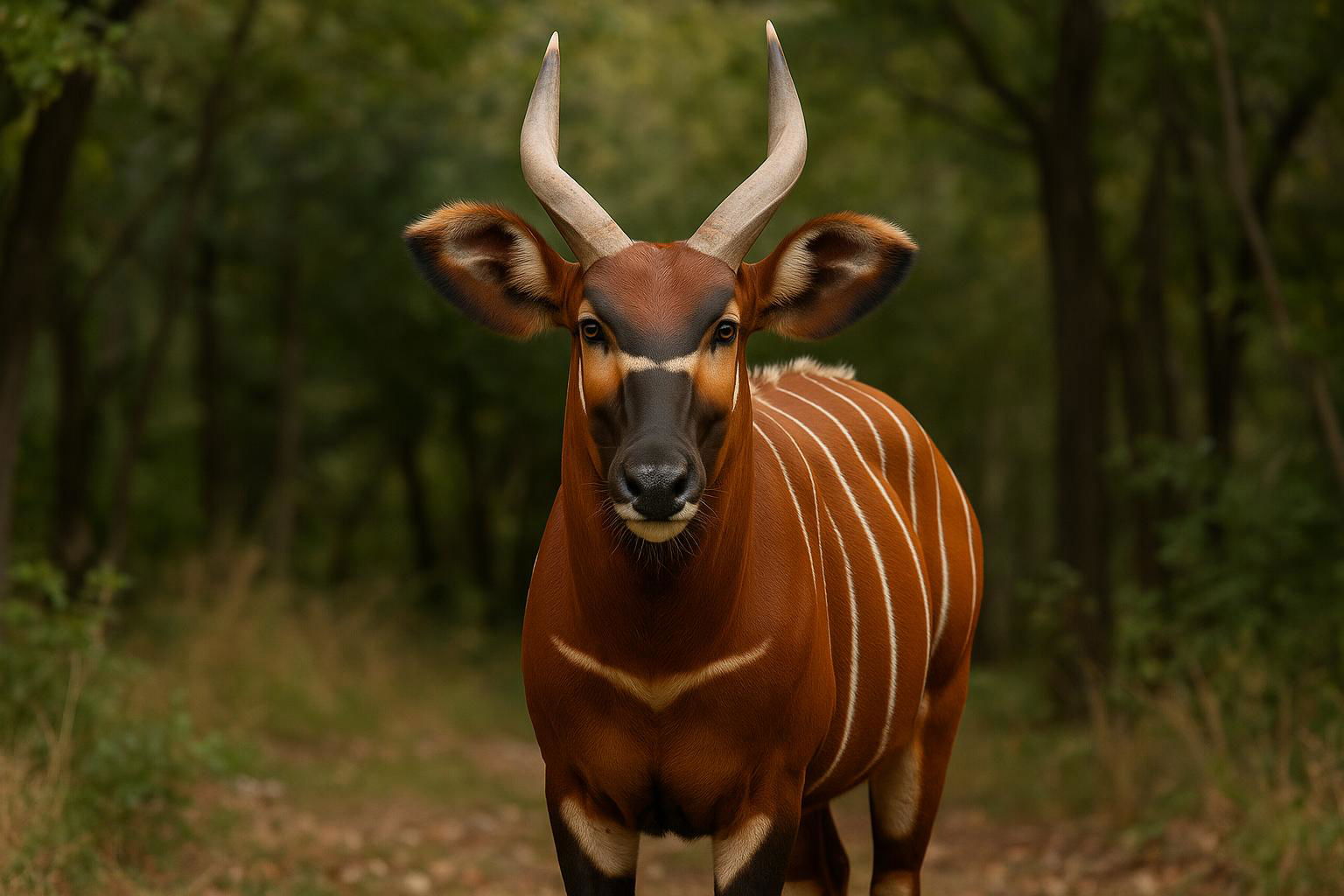
Bongo
Tragelaphus eurycerus
The bongo (Tragelaphus eurycerus) is a strikingly beautiful and elusive herbivore found predominantly in the dense, tropical forests of central Africa, including parts of Kenya, the Democratic Republic of Congo, and the Central African Republic. Sporting a vibrant chestnut or auburn coat adorned with a series of narrow white vertical stripes, these antelopes boast a coloration well-suited to camouflaging among the forest undergrowth. Both males and females possess long, spiral horns which can grow over 90 centimeters in length, a trait unique among African antelopes.
Bongos are primarily nocturnal, preferring to forage for leaves, shoots, and grasses under the cover of darkness, which helps them avoid predators. They are the largest forest antelope, with adults weighing between 150 to 405 kilograms. Social creatures, bongos typically form small groups composed of females and their young, while mature males are more solitary, coming together with others mainly during the breeding season. Due to their secretive nature and the dense forests they inhabit, bongos are seldom seen in the wild, earning them a mythical status among the indigenous people.
The species is divided into two subspecies: the mountain bongo (Tragelaphus eurycerus isaaci) and the lowland bongo (Tragelaphus eurycerus eurycerus). Sadly, the mountain bongo is critically endangered due to habitat loss, poaching, and human-wildlife conflict, necessitating conservation efforts to protect these magnificent animals and their environment.

 All Species & Breeds
All Species & Breeds
 Highland Cattle
Highland Cattle
 Miniature Donkeys
Miniature Donkeys
 All Species Directory
All Species Directory
 Highland Cattle in Virginia
Highland Cattle in Virginia
 Miniature Donkeys in Texas
Miniature Donkeys in Texas












